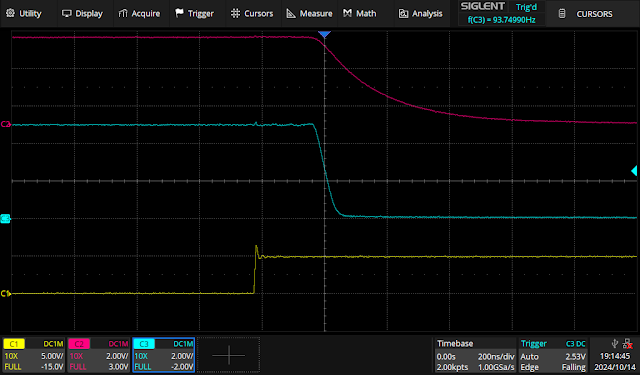I really do like CD4000B series CMOS logic, because it's just so easy to use.
This circuit design is a simple 4-bit 1R/2R ladder DAC tied to a 4-bit synchronous counter (1/2 of a CD4520B). This DAC is not particularly vexing to build, and it basically "just works" 😀! The waveform fidelity is relatively good using just 1% tolerance resistors. It's a 16-step sawtooth sequence. Strict waveform purity is non-goal here, because the very idea is to generate harmonics.
I'm contemplating building several CMOS waveform generator circuits like this, in connection with a TC9400 V/F convertor IC that is driven from an antilog generator to form a multiple simultaneous waveform and frequency 1V/Octave VCO. The V/F will offer a super-harmonic frequency that when divided down yields audio frequency waveforms. The TC9400 can be operated at up to 500 kHz with 5x overrange, but in general service offers good linearity up to 100 kHz. In the case of the VCO, I will probably use the V/F at 48 kHz maximum, which with this DAC would yield a sawtooth waveform of 3 kHz, while retaining somewhat stronger linearity than 100 kHz full-scale. I'm not too worried about the total audio frequency dynamic range, because what's of interest for the VCO is musical frequencies, not a 20-20kHz audio range. Also, frequency doublers are very easy to make, especially with digital signals available. Alternatively, a 3-bit 8-step variant can easily be made which would offer 6 kHz.
Other CMOS waveform generators contemplated include sinusoidal approximation, triangle waves, and others. It's anticipated the subsequent spectral shaping would occur for both combined waveform generation (like with a Ring Modulator) and also via a VCF, which can remove sharp edges from switching events. CD4000B logic makes a plethora of simultaneous waveforms available with ease, and at very low cost.
Scope fotos follow after the engineering notebook drawing, immediately below.





Comments
Post a Comment